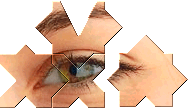1. VULNERABILTY FACTORS ( a.k.a Contextual Events, Setting Events):
Environmental events or series of events or important personal factors such
as "states of mind", affective/mood states or biological factors) that
reliably make the person more vulnerable to the efforts of precipitating
events. INTERVENTIONS: Contingency management, self-management skills
LEADS TO:
2. THE PRECIPITATING EVENT (a.k.a Environmental Precipitants, Triggers,
Cues, Antecedents): Environmental events that precipitate the chain that
leads to the targeted problem behaviour. (I.e. Fight with house mate)
INTERVENTIONS: Core Mindfulness, Interpersonal Skills
LEADS TO:
3. THOUGHTS /ACTIONS, FEELINGS BEFORE, FEELINGS AFTER, CONSEQUENCES
(I.e. Self Invalidation ---- "I can't stand this!" INTERVENTIONS: Increase
self-validation, distress tolerance skills,
LEADS TO:
Emotion Dysregulation: Shame/Panic, Sea of Dyscontrol/Active Passivity
INTERVENTIONS: Active Problem solving, exposure and response prevention
Impulsive decision to cut: cutting with razor: INTERVENTIONS: Active Problem
solving, exposure and response prevention
Consequences: immediate emotion regulation and communication of distress
A) DYSFUNCTIONAL LINKS (Each thought, emotion, action, and event that
linked the vulnerability factors and precipitants to the targeted behavior.
A link is dysfunctional if it moves the client away from their long-term
goals. Dysfunctional links might include any of the following:
DBT Skills Deficits: Skill deficits in mindfulness, interpersonal
effectiveness, emotion regulation, and distress tolerance related to problem
behaviour.
Secondary Targets: IDENTIFICATION OF TARGETED PROBLEMATIC BEHAVIOR
Secondary Targets to decrease: emotional vulnerability, self-invalidation,
crisis generating behaviours, inhibited grieving, active passivity, and
apparent competence
B) EFFECTIVE BEHAVIOR: Secondary Targets to increase: emotion modulation,
self-validation, realistic judgement, emotional experiencing, active problem
solving, accurate expression and non-mood dependency
Variables Specific to this Person (in addition to above) Any specific
emotions AND/OR cognitive patterns, AND/OR action sequences that
precipitate/support the targeted problem behaviours or inhibit/punish
effective behaviours that could replace problem behaviours.
CONSEQUENCES (a.k.a. processes of reinforcement, punishment, and extinction)
Events or responses that are functionally related to critical targeted
behaviours. Assess rather that assume whether events are in fact reinforcing
and/or punishing for this particular client and describe under what
circumstances (context) these acts as reinforcers or punishers. Try to
ascertain the most effective level of intensity and a punishment at a
different level. The same can be said of the similar events in different
contexts.
Reinforcers (positive and negative) of problem behaviours. A common negative
reinforcer is the reduction of aversive affective states. Also identify any
positive reinforcers (things added to the environment) Note any relevant
changes from reinforcer (things added to the environment). Note any relevant
changes from reinforcers to punishment at different intensities or within
different contexts.
Punishers (aversive consequences) of effective behaviour. Describe both
punishments that currently control problem behaviours as well as aversive
events that have been or might be used to control problem behaviours.
1. What exactly is the major PROBLEM BEHAVIOR that I am analyzing?
Vulnerability -> Prompting event -> Links-> Problem Behaviour ->Consequences
Possible type of links: Actions, Body Sensations, Cognitions, Events, and
Feelings
2. What PROMPTING EVENT in the environment started me on the chain to
my problem behaviour?: Start Day/hour:___
3. What things in my environment and myself made me VULNERABLE? Start
Day/hour___
4. LINKS: List actual and specific behaviors and events
5. LINKS: List new and more skillful behaviors
6. What exactly were the CONSQUENCES in the environment:
7. Immediate: ______ Delayed:_________
8. 7. What exactly were the CONSQUENCES in myself:
9. Immediate: ______ Delayed:_________
10. Ways to reduce my VULNERABILITY in the future:
11. Ways to prevent PROMPTING EVENT from happening again:
12. What HARM did my PROBLEM BEHAVIOUR CAUSE:
13. Plans to REPAIR, CORRECT, AND OVER-CORRECT the harm:
14. MY DEEPEST THOUGHTS AND FEELINGS ABOUT THIS (THAT I WANT TO SHARE):
Source:Linehan Training Group\Workshop History\Intensive Workshops\Seattle
98-99\Training materials\Materials for Participants\Guidelines Case
Formulation Assignment.
DBT Chain Analysis of Problem Behavior PDF
 as of April 27, 2004
as of April 27, 2004




